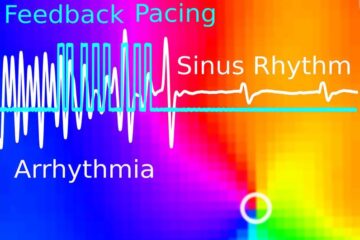Uneven surfaces conserve fuel

Tiny regular bumps on a surface, such as the wing of an airplane, can substantially reduce total air resistance, and thereby the consumption of fuel. Wind tunnel tests at the Royal Institute of Technology (KTH) in Stockholm, Sweden, show that small cylindrical bumps on a surface delay the transition from laminar flow (well-ordered) to turbulent (chaotic) when air flows over a surface-a crucial factor in total air resistance.
If this finding, made by an international research team at KTH, holds up in tests outside the laboratory, huge savings may be in store for the aviation industry.
Many other technological applications may see major yet simple cost reductions and save energy as a result of reduced air resistance. The findings are being published in the prestigious journal Physical Review Letters and are making waves around the world.
“The discovery is revolutionary for physicists working with fluid mechanics, since it goes against the conventional thinking that an uneven surface could only speed up the transition to turbulence,” says Jens Fransson, one of the scientists in the research group.
A further benefit the newly discovered method might offer is that it is passive-it requires no more input than properly placed bumps on the surface to prevent unnecessary turbulence. Many earlier methods for reducing total air resistance have involved the elimination of turbulence that has already occurred.
In wind tunnel experiments at the Department of Mechanics at KTH, the scientists have created velocity variations against the direction of the flow by placing tiny cylindrical elements on a surface. This hampers the occurrence of instabilities and delays the transition of laminar flow to turbulence.
Plasma physics, laser technology, and magnetohydrodynamics are further examples of fields where the underlying physical mechanism should be of interest.
Other participating scientists: Prof. Alessandro Talamelli, Il Facoltà di Ingegneria, Universitetà di Bologna, Italy; Luca Brandt, Ph.D., KTH Mechanics, Stockholm; Assoc. Prof. Carlo Cossu, LadHyX, CNRS École Polytechnique, France.
Media Contact
More Information:
http://www.kth.seAll latest news from the category: Physics and Astronomy
This area deals with the fundamental laws and building blocks of nature and how they interact, the properties and the behavior of matter, and research into space and time and their structures.
innovations-report provides in-depth reports and articles on subjects such as astrophysics, laser technologies, nuclear, quantum, particle and solid-state physics, nanotechnologies, planetary research and findings (Mars, Venus) and developments related to the Hubble Telescope.
Newest articles

Wildfire danger to increase due to climate change
WSL Institute for Snow and Avalanche Research (SLF) researchers expect an elevated wildfire danger in the Alpine Foreland from 2040 onwards due to changing meteorological conditions. The danger currently remains…

Advanced Brain Science Without Coding Expertise
Researchers at Helmholtz Munich and the LMU University Hospital Munich introduce DELiVR, offering a new AI-based approach to the complex task of brain cell mapping. The deep learning tool democratizes…

Gentle defibrillation for the heart
Using light pulses as a model for electrical defibrillation, Göttingen scientists developed a method to assess and modulate the heart function. The research team from the Max Planck Institute for…





















